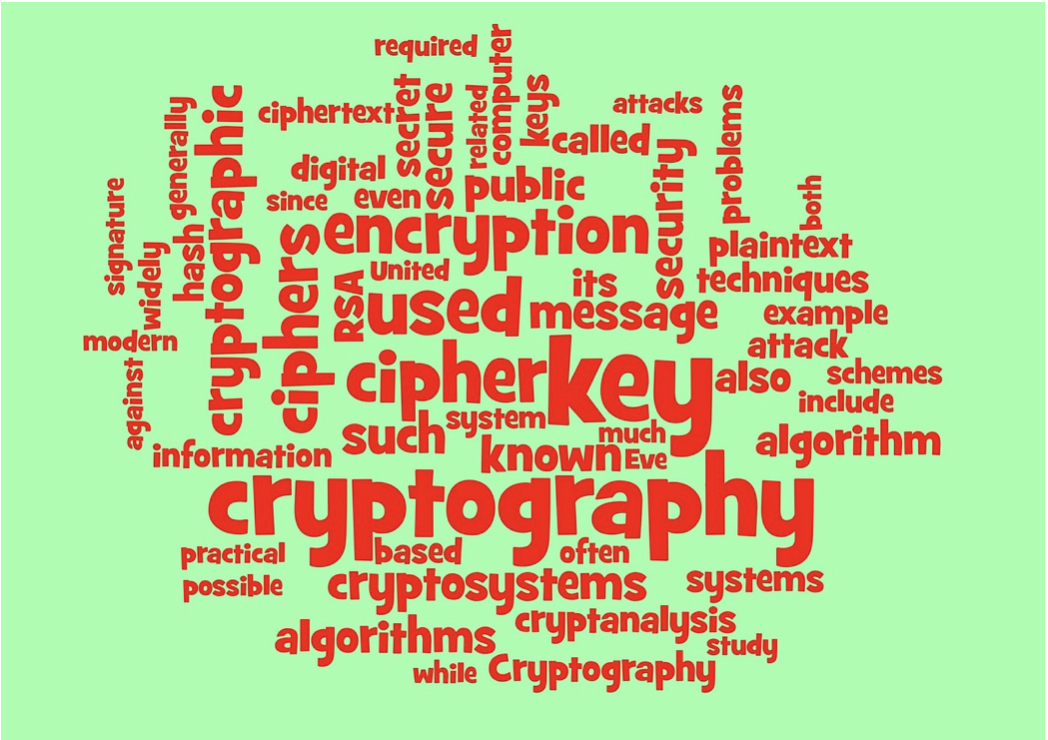Argon2id Encryption: The future of Password Storage
 Souvik Ojha
Souvik Ojha
In today's digital age, ensuring the security of sensitive data is of paramount importance. One critical aspect of data security is password storage. As an engineer or developer, you may have come across various cryptographic algorithms for password storage, such as MD5, SHA1, SHA256, PBKDF2, Bcrypt, Scrypt, Argon2, and plaintext. However, not all algorithms are created equal, and choosing the right one can be the difference between secure and vulnerable systems.
In this comprehensive guide, we will explore the cutting-edge Argon2id encryption algorithm, its advantages over other hashing functions, and how to effectively implement it for robust password storage. Throughout this article, we will delve into the key features, modes, parameters, and best practices associated with Argon2id. By the end, you will have a clear understanding of how Argon2id can revolutionize your password storage methods and ensure the utmost security for your users.
Understanding Argon2id
The Evolution of Password Encryption
In the early days of the internet, password storage was a significant vulnerability. Many services stored passwords in plaintext, leaving them susceptible to theft. To mitigate this risk, developers began using one-way hashing algorithms like MD5 and SHA1 to convert passwords into irreversible hashes. However, these algorithms proved to be inadequate, as attackers could precompute hashes and reverse lookup original passwords using rainbow tables.
Introducing Argon2id
Argon2id emerged as a groundbreaking solution to address the limitations of previous hashing algorithms. It is a cryptographic algorithm specifically designed for password encryption, offering superior protection against various attacks, including GPU cracking and side-channel attacks. In fact, Argon2id was the winner of the Password Hashing Competition in 2015 and has since gained widespread recognition as the go-to algorithm for secure password storage.
Exploring the Modes of Argon2
Argon2 provides different modes to cater to specific security requirements. Let's take a closer look at the three modes of Argon2:
- Resisting Side-Channel Attacks (Argon2i)
Argon2i is specifically built to resist side-channel attacks. It achieves this by using data-independent memory access, ensuring that the memory access patterns do not reveal any information about the password being hashed. This mode is ideal when protecting against side-channel attacks is a top priority.
- Defense Against GPU Cracking Attacks (Argon2d)
If your application is primarily concerned with defending against GPU cracking attacks, Argon2d is the mode to choose. It maximizes resistance to GPU-based attacks by utilizing data-dependent memory access, making it harder for an attacker to parallelize the computation on a graphics processing unit.
A Hybrid Approach (Argon2id)
Argon2id combines the best of both worlds by offering a hybrid approach. It combines the resistance against side-channel attacks from Argon2i with the defense against GPU cracking attacks from Argon2d. This mode provides a balanced solution, making it suitable for most password storage scenarios.
Customizing Argon2 Parameters
Argon2 allows for fine-grained customization by adjusting three key parameters: time, memory, and threads. These parameters determine the computational cost of hashing a password and can be tailored to suit the specific needs of your application. Let's explore each parameter in detail:
- Time Parameter: Balancing Security and Performance
The time parameter determines the number of iterations performed by Argon2. Increasing the number of iterations improves the security of the encryption but also increases the computational cost. It is crucial to strike a balance between security and performance based on your system's capabilities and the level of protection required.
- Memory Parameter: Protecting Against Memory Attacks
The memory parameter defines the amount of memory used by Argon2 during the hashing process. A higher memory parameter increases the resistance against memory attacks, as an attacker would need to allocate a significant amount of memory to break the encryption. However, it is essential to consider the memory constraints of your system and adjust this parameter accordingly.
- Threads Parameter: Optimizing Parallelism
The threads parameter determines the degree of parallelism used by Argon2. Increasing the number of threads allows for faster computation but can also impact the overall performance of your system. It is crucial to consider the capabilities of your hardware and strike a balance between parallelism and efficient resource utilization.
Implementing Argon2id in Practice
Now that we have explored the key concepts and parameters of Argon2id, let's dive into the practical implementation of this powerful encryption algorithm. Here are the steps to effectively implement Argon2id for password storage:
Step 1: Choose a Secure Library or Implementation
To implement Argon2id, it is essential to use a reliable and secure library or implementation. Several programming languages provide built-in support for Argon2id, such as DartArgon2id in the cryptography library. Ensure that you select a library or implementation that is actively maintained and follows best practices.
Step 2: Generate a Secure Salt
Before hashing a password with Argon2id, it is crucial to generate a secure salt. A salt is a random value that is appended to the password before hashing, making it unique and further enhancing the security of the encryption. It is recommended to use a cryptographically secure random number generator to generate the salt.
Step 3: Hash the Password
Once you have a secure salt, you can proceed to hash the password using Argon2id. Pass the password, salt, and desired parameters (time, memory, and threads) to the Argon2id function provided by your chosen library or implementation. The function will perform the necessary computations and return the hashed password.
Step 4: Store the Hashed Password
Finally, store the hashed password and the corresponding salt in your database or storage system. It is crucial to ensure that the hashed password and salt are stored securely, protecting them from unauthorized access. By securely storing the hashed password, you can verify the authenticity of user-provided passwords without storing the passwords themselves.
Best Practices for Argon2id Implementation
To maximize the security and effectiveness of your Argon2id implementation, it is essential to follow best practices. Here are some key recommendations to consider:
- Use Strong and Unique Passwords
Encourage your users to create strong and unique passwords. A strong password should be long, complex, and include a combination of uppercase and lowercase letters, numbers, and special characters. By promoting strong password practices, you can enhance the overall security of your system.
- Regularly Update Argon2 Parameters
As technology advances and computing power increases, it is crucial to periodically reassess and update your Argon2 parameters. What may have been considered secure a few years ago may no longer provide adequate protection against evolving attacks. Stay up to date with the latest recommendations and research in the field of password storage and adjust your parameters accordingly.
- Protect Against Side-Channel Attacks
While Argon2id provides resistance against side-channel attacks, it is essential to ensure that your implementation is secure against other potential side-channel vulnerabilities. Protect sensitive information, such as timing information, during the hashing process to prevent attackers from exploiting side-channel vulnerabilities.
- Regularly Audit and Monitor Password Storage
Implement regular audits and monitoring of your password storage system to detect any potential vulnerabilities or unauthorized access attempts. By actively monitoring your system, you can quickly identify and mitigate any security risks, ensuring the ongoing protection of user passwords.
Comparing Argon2id with Other Hashing Algorithms
While Argon2id offers superior security and flexibility, it is worth comparing it with other popular hashing algorithms such as bcrypt and scrypt. Let's briefly examine the strengths and weaknesses of each algorithm and the scenarios in which they are most suitable.
Bcrypt (The Battle-Tested Hashing Algorithm)
Bcrypt is a widely used hashing algorithm known for its battle-tested security. It is based on the Blowfish cipher and offers adjustable work factor parameters. Bcrypt is an excellent choice when backward compatibility and a long track record of security are essential.
Scrypt (Memory-Hard Key Derivation Function)
Scrypt is a key derivation function designed to be memory-hard, making it resistant to both GPU cracking and side-channel attacks. It is particularly suitable for scenarios where memory security is a significant concern, such as protecting encrypted data or key derivation.
Argon2id (The Future)
While bcrypt and scrypt have their strengths, Argon2id has emerged as the future of password storage. It combines the best features of both algorithms, providing robust protection against various attacks while allowing for fine-tuning of parameters based on specific requirements. Argon2id is ideal for any scenario where secure password storage is a top priority.
Real-World Applications of Argon2id
Argon2id has gained widespread adoption and is utilized in various real-world applications where secure password storage is crucial. Let's explore some common use cases where Argon2id shines:
Web Apps and Services
Web apps and online services handle vast amounts of sensitive user data, making them prime targets for attackers. Implementing Argon2id for password storage ensures that user passwords are adequately protected, reducing the risk of unauthorized access and data breaches.
Mobile Apps
Mobile apps often store sensitive user information, including passwords. By integrating Argon2id into mobile application development, developers can ensure that user passwords are encrypted and secure, safeguarding user privacy and preventing unauthorized access.
IoT Devices and Smart Home Systems
With the rise of the Internet of Things (IoT), securing user credentials on IoT devices and smart home systems has become critical. Argon2id provides a robust encryption solution, protecting user passwords and ensuring the integrity of IoT ecosystems.
Argon2id and Future Developments
The field of cryptography is ever-evolving, and new developments are continuously emerging to enhance data security. While Argon2id is currently one of the most secure hashing algorithms available, ongoing research and advancements may introduce even stronger encryption methods in the future. It is essential to stay informed about the latest developments in the field and adapt your password storage practices accordingly.
Subscribe to my newsletter
Read articles from Souvik Ojha directly inside your inbox. Subscribe to the newsletter, and don't miss out.
Written by

Souvik Ojha
Souvik Ojha
Learning more about the most easiest topics available on the floor...